
def. Quarry:
1. An open-pit mine from which rock is extracted, usually rock which is used as a building stone.
2. A place frequented by rock-hunting geologists.
3. A cold, deep body of water frequented by daring rock jumpers and divers.
4. (Obsolete, except in those old books I read sometimes): Game meat; something that is hunted or pursued.
Geologists often hunt for rocks* in quarries, which are found in a wide variety of rock types. Quarries often expose rocks that would otherwise be difficult to see because of weathering or cover by vegetation and soil. Quarries also often expose beautiful or unusual rocks that are valued as building stones or for some other purpose. Many quarries are no longer actively mined, and geologists may collect rocks in a semi-legal fashion from large, abandoned talus piles (bits of rock leftover from mining). Other quarries are still actively mined for building stones and other material. Some of these active quarries are closed to the general public. Other active quarries encourage visitors, and sometimes even make a small profit by allowing geotourists to collect samples. And sometimes– speaking purely hypothetically of course– a private, closed quarry may become “accessible” when a geology professor teaches his petrology class the stealth arts of scaling fences, sneaking over locked gates, and running very swiftly with wollastonite hand samples. Not that I would know anything about that purely hypothetical example, of course.
Geologists really enjoy visiting quarries. A few geologists even work for quarries, investigating the rock being extracted and identifying good places to extend or build a quarry.
*A geologist’s quarry. Get it?
Here’s a plethora of quarry pictures, illustrating the wide range of rocks in which quarries are found:

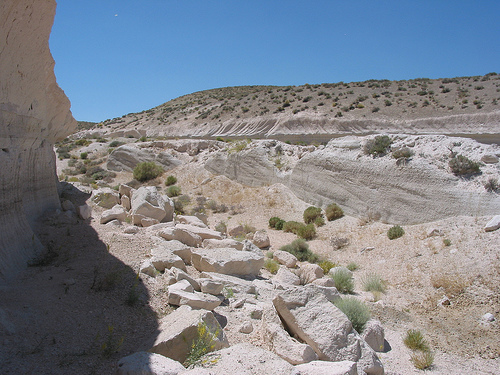

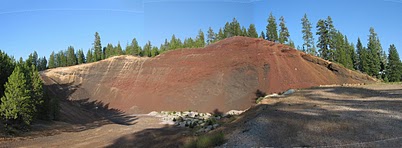
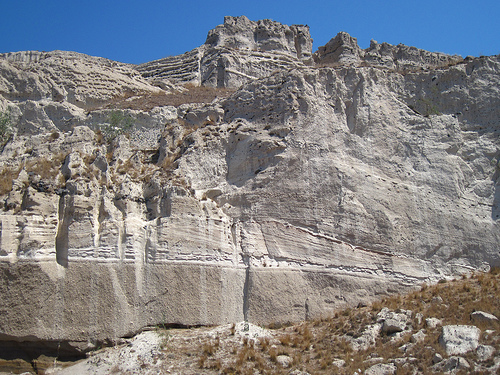
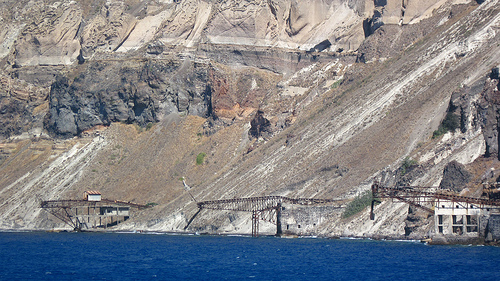



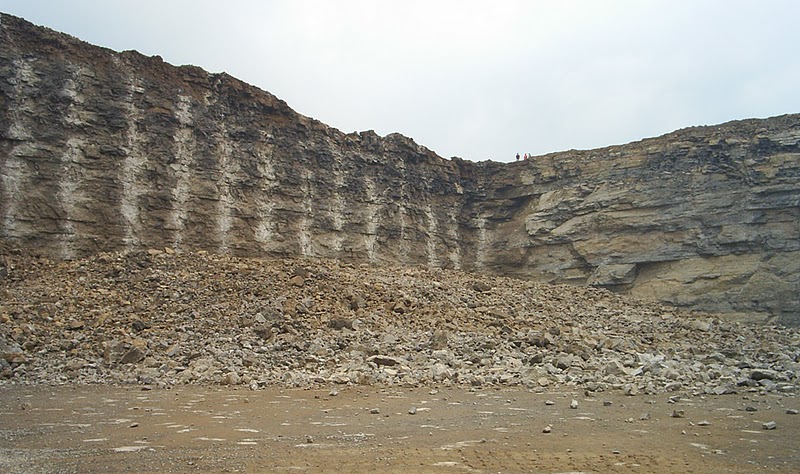
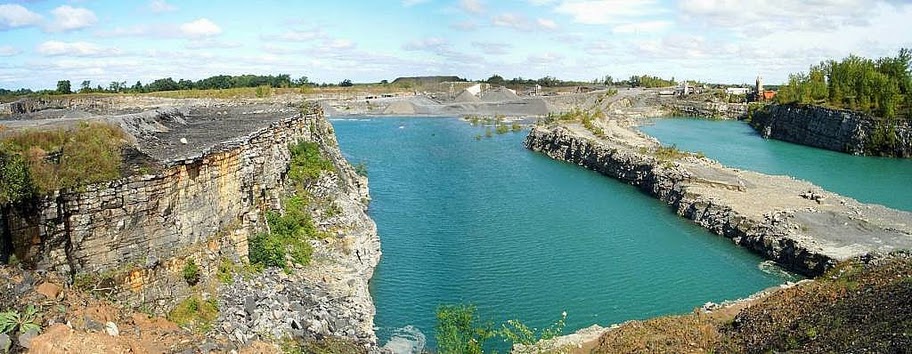
***Thanks to Lockwood Dewitt for suggesting this week’s word. Thanks to Ron Schott, Gareth Fabbro, Dana Hunter, and Patrick Donohue for providing pictures. For additional quarry photos, see Gareth’s Flickr collection and Patrick’s Picasa collection. Also check out these incredible Quarry photos by professional photographer Edward Burtynsky (click on the Quarry link on the left side of the website). Thanks to Matt Hall for directing me to the Burtynsky photos.***

I’ve also gotten some excellent fossils from quarries.
I also once had a great conversation with the lead of the blasting team over depth of placement, selection of explosive and separation of charges, as well as blast timing and enough other specific items that rather alarmed the group I was with.
Kept getting those, “who IS this guy and HOW does he know so much about explosives.”
I clued them in, eventually, on my military background, which involved quite a bit of explosive usage BEFORE they called the police. 🙂
LikeLike
I never knew how beautiful quarries can be.
LikeLike